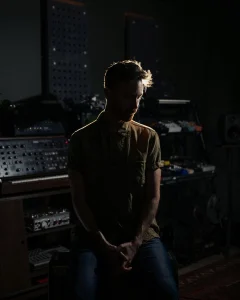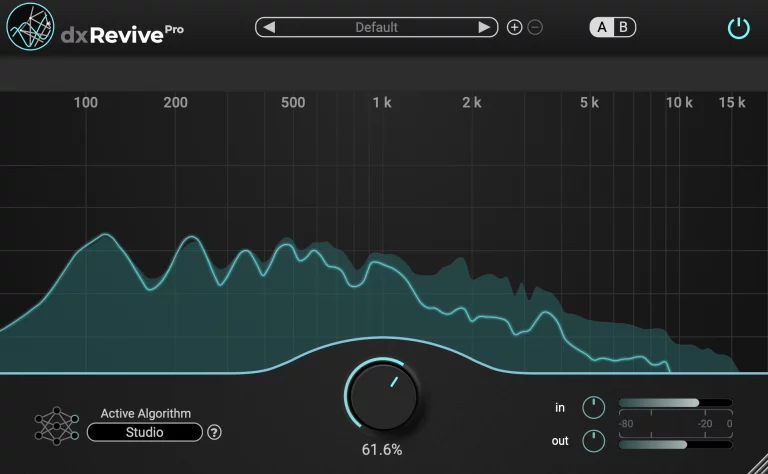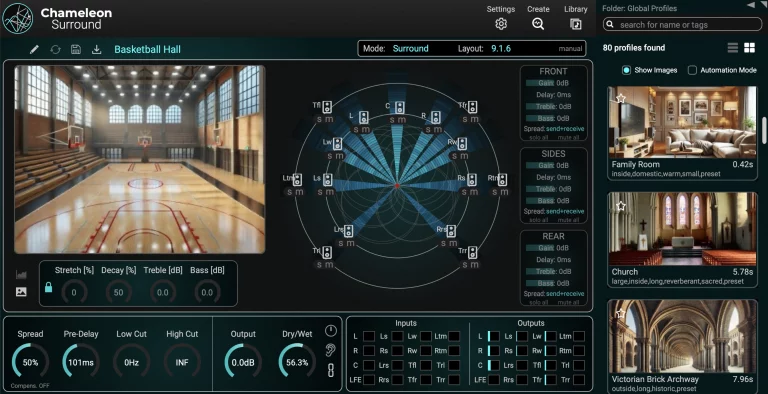Fixing the Unfixable: How Re-Recording Mixer TJ Dumser Tackles Tough Audio

In post-production, clean, intelligible audio is essential, especially in situations where there’s no second take or chance to re-capture a performance. Even when re-takes like ADR are an option, they’re often time-consuming or creatively disruptive. That’s why tools that can restore and enhance existing recordings have become vital to modern workflows.
We recently spoke with TJ Dumser, a re-recording mixer and sound designer behind commercial campaigns and Dropout.tv series like Dimension 20 and Game Changer, about how he uses dxRevive Pro and Chameleon to tackle real-world audio challenges. From recovering compromised dialogue to blending ADR so it feels invisible in the mix, TJ’s approach shows how powerful the right tools can be when every moment counts.
In this article, we’ve summarized that conversation to highlight how dxRevive Pro and Chameleon are used together in real-world post-production. It’s a practical look at what these tools are capable of when combined—and how they help audio professionals deliver clean, cohesive results even under challenging conditions.
1. Recovering Compromised Dialogue
In unscripted, fully improvised series like those produced by Dropout.tv, there’s no safety net when it comes to audio. What’s captured on set is often the only version available—no alternate takes, no second chances. That can present serious challenges when a lav mic cuts out mid-line, or a performer suddenly shifts off-axis, leaving you with a recording that’s too noisy, distant, or uneven.
To address this, TJ often has to pull audio from alternate sources—such as another performer’s mic or a boom mic placed far overhead. These backups are rarely ideal, but they provide a starting point. From there, he uses dxRevive Pro to isolate and restore the dialogue, making it feel as present and natural as the original mic would have captured.
If a lav drops, I’ll often have to pull from another actor’s mic or a far-off boom. That audio might be thin, distant, or noisy—but dxRevive Pro lets me zero in and clean it up so it fits right into the scene.
Unlike conventional noise reduction tools, dxRevive Pro doesn’t just remove noise—it uses AI-based resynthesis to rebuild missing vocal detail, recovering the warmth and closeness of a direct mic signal. That extra layer of reconstruction is what makes it possible to salvage even difficult recordings.
This allows him to preserve natural performances, even when the raw audio is far from ideal.
2. Rebuilding the Acoustic Space
Cleaning up damaged audio is often just the beginning. Once a compromised line is restored, the next challenge is making sure it blends seamlessly with the rest of the scene. A cleaned-up voice can still feel out of place if it doesn’t carry the same sense of space as the surrounding dialogue.
To solve this, TJ uses Chameleon to recreate the original acoustic environment. By analyzing a snippet of nearby dialogue or a natural room tail, the plugin generates a custom reverb profile that matches the space exactly. Applying that to the restored line helps it sit naturally in the mix—matching tone, depth, and ambience — so the edit doesn’t stand out to the listener.
Once I’ve got a usable line, I use Chameleon to recreate the exact reverb profile of the space. It helps it sit in the mix as if nothing ever went wrong.
3. Maintaining Polish in Commercial Workflows
Beyond longform content, TJ also works extensively in commercial audio—projects that range from national broadcast campaigns to fast-turnaround digital spots. In that world, deadlines are tight, expectations are high, and there’s little room for error.
Whether it’s smoothing over a scratch VO, salvaging audio from a last-minute reshoot, or cleaning up dialogue recorded in less-than-ideal conditions, dxRevive Pro and Chameleon have become central to his process. They’re not just emergency tools—they’re a regular part of the signal chain that help ensure every spot sounds clean, cohesive, and ready for broadcast.
I rely on these tools constantly. Whether it's a scratch VO, a patch from a reshoot, or dialogue recorded in a non-ideal environment, dxRevive Pro and Chameleon are part of my core chain. They’ve saved countless sessions.
4. Redefining What’s Possible in Post
For TJ, the impact of tools like dxRevive Pro and Chameleon goes beyond technical improvement—they’ve changed the way he approaches post-production altogether.
Where once a flawed recording might have been written off as unusable, there’s now a mindset of possibility: exploring how far a problematic take can be pushed, how transparently it can be recovered, and how naturally it can be integrated into a final mix. What used to be a limitation becomes an opportunity for creative problem-solving.
I used to think, ‘We just can’t fix this.’ Now it’s more like, ‘What can I get away with fixing?’ These tools give me more options, more confidence, and honestly, more curiosity.
That shift is especially important in today’s content landscape, where audio might be recorded on phones, webcams, or low-budget setups. Even under less-than-ideal circumstances, the expectation for quality remains—and with the right tools, it’s possible to meet that expectation without compromise.



